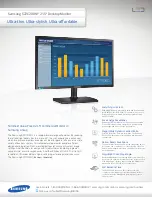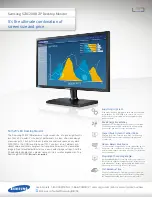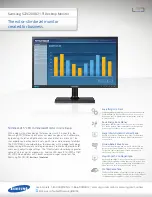
8XC251SA, SB, SP, SQ USER’S MANUAL
A-26
A.4
INSTRUCTION DESCRIPTIONS
This section describes each instruction in the MCS 251 architecture. See the note on page A-11
regarding execution times.
Table A-28 defines the symbols (
—
,
✓
, 1, 0,?) used to indicate the effect of the instruction on the
flags in the PSW and PSW1 registers. For a conditional jump instruction, “!” indicates that a flag
influences the decision to jump.
ACALL <addr11>
Function:
Absolute call
Description:
Unconditionally calls a subroutine at the specified address. The instruction increments the 3-
byte PC twice to obtain the address of the following instruction, then pushes bytes 0 and 1 of
the result onto the stack (byte 0 first) and increments the stack pointer twice. The destination
address is obtained by successively concatenating bits 15–11 of the incremented PC,
opcode bits 7–5, and the second byte of the instruction. The subroutine called must
therefore start within the same 2-Kbyte “page” of the program memory as the first byte of the
instruction following ACALL.
Example:
The stack pointer (SP) contains 07H and the label "SUBRTN" is at program memory location
0345H. After executing the instruction
ACALL SUBRTN
at location 0123H, SP contains 09H; on-chip RAM locations 08H and 09H contain 25H
and 01H, respectively; and the PC contains 0345H.
Binary Mode
Source Mode
Bytes:
2
2
States:
9
9
Table A-28. Flag Symbols
Symbol
Description
—
The instruction does not modify the flag.
✓
The instruction sets or clears the flag, as appropriate.
1
The instruction sets the flag.
0
The instruction clears the flag.
?
The instruction leaves the flag in an indeterminate state.
!
For a conditional jump instruction: The state of the flag before the
instruction executes influences the decision to jump or not jump.
Flags:
CY
AC
OV
N
Z
—
—
—
—
—
Summary of Contents for 8XC251SA
Page 2: ......
Page 3: ...May 1996 8XC251SA 8XC251SB 8XC251SP 8XC251SQ Embedded Microcontroller User s Manual...
Page 18: ......
Page 19: ...1 Guide to This Manual...
Page 20: ......
Page 30: ......
Page 31: ...2 Architectural Overview...
Page 32: ......
Page 41: ...3 Address Spaces...
Page 42: ......
Page 63: ...4 Device Configuration...
Page 64: ......
Page 81: ...5 Programming...
Page 82: ......
Page 102: ......
Page 103: ...6 Interrupt System...
Page 104: ......
Page 120: ......
Page 121: ...7 Input Output Ports...
Page 122: ......
Page 132: ......
Page 133: ...8 Timer Counters and Watchdog Timer...
Page 134: ......
Page 153: ...9 Programmable Counter Array...
Page 154: ......
Page 170: ......
Page 171: ...10 Serial I O Port...
Page 172: ......
Page 187: ...11 Minimum Hardware Setup...
Page 188: ......
Page 197: ...12 Special Operating Modes...
Page 198: ......
Page 206: ......
Page 207: ...13 External Memory Interface...
Page 208: ......
Page 239: ...14 Programming and Verifying Nonvolatile Memory...
Page 240: ......
Page 250: ......
Page 251: ...A Instruction Set Reference...
Page 252: ......
Page 390: ......
Page 391: ...B Signal Descriptions...
Page 392: ......
Page 400: ......
Page 401: ...C Registers...
Page 402: ......
Page 436: ......
Page 437: ...Glossary...
Page 438: ......
Page 446: ......
Page 447: ...Index...
Page 448: ......
Page 458: ......
















































